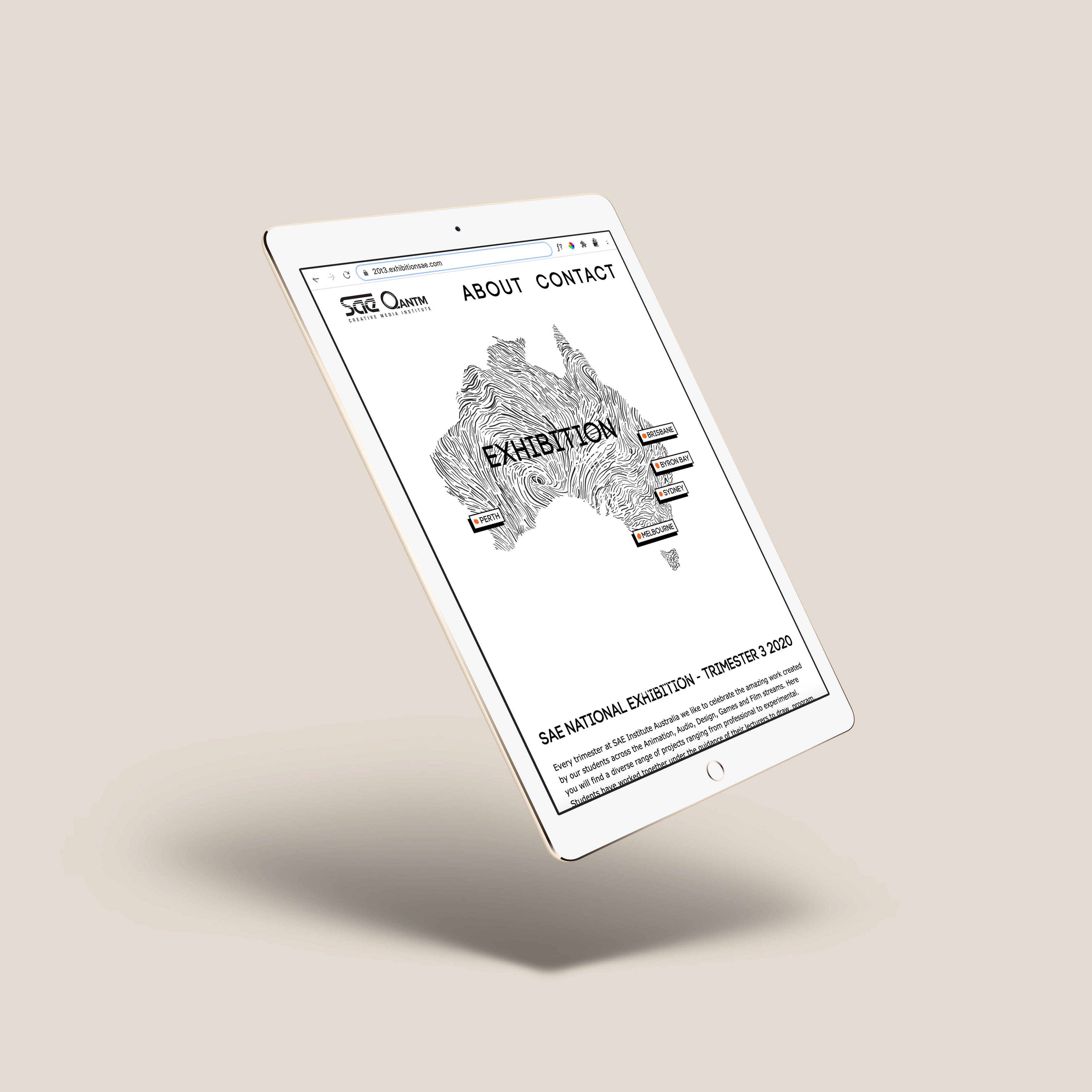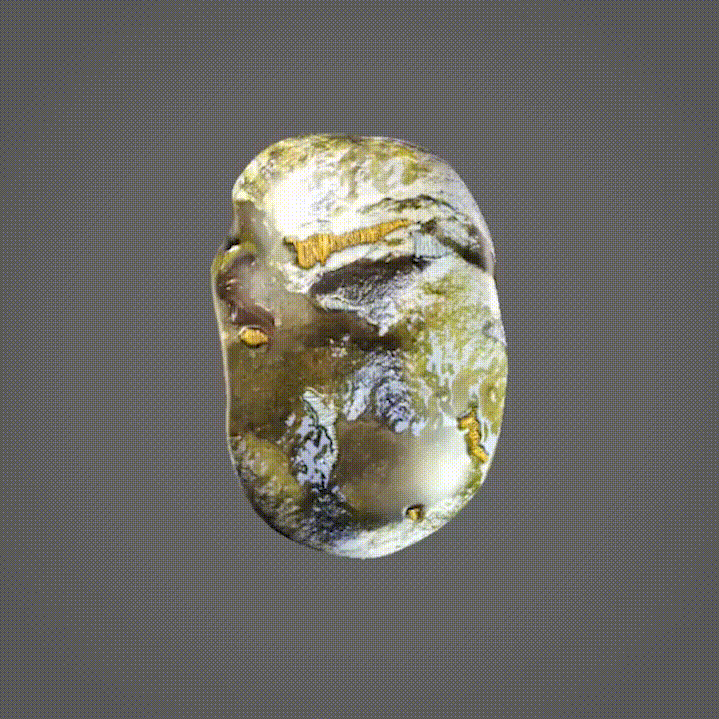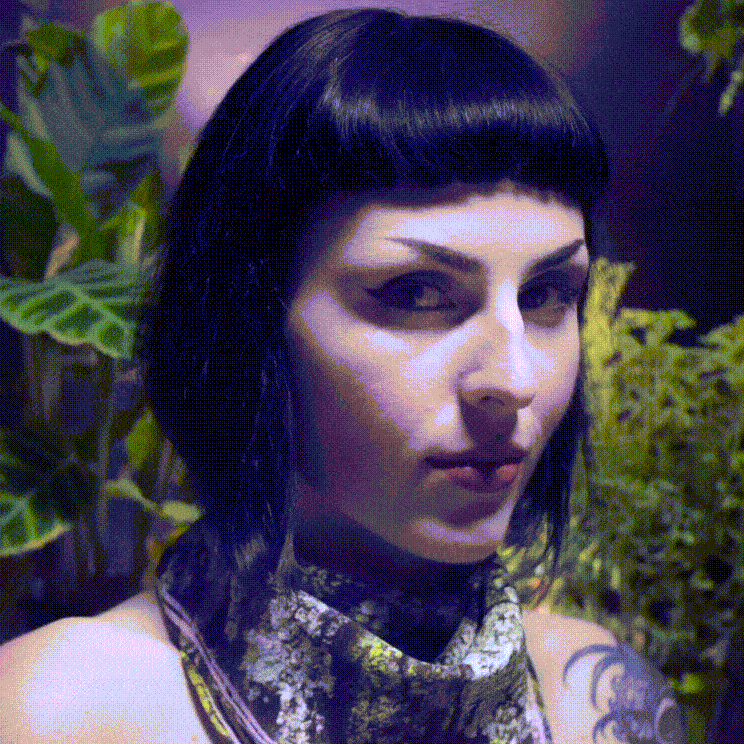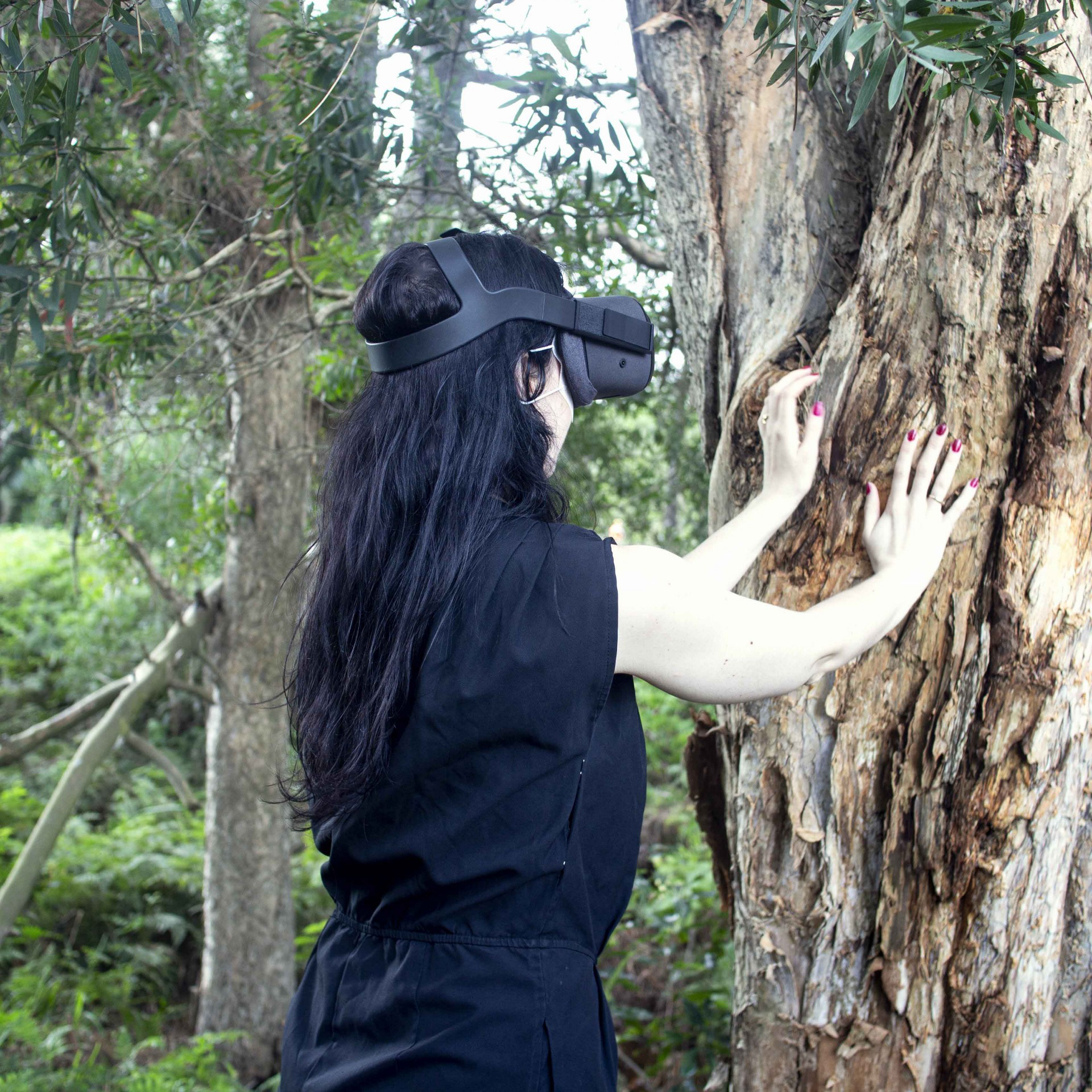Non-Urban Decay is a short experimental animation and VR experience that explores the tension between digital representations of nature and the organic environments they attempt to replicate. This work critically examines how ‘natural’ spaces are reconstructed within online social environments, questioning the authenticity and perception of these virtual landscapes.
Viewer watching the experience
The piece juxtaposes two distinct yet equally fictitious environments, generated through different processes. One scene is constructed entirely from standard game assets, designed to emulate natural landscapes, while the other is built from real-world environmental scans taken at various locations across New South Wales, including Sydney’s Royal Botanic Gardens, Hyde Park, and Mount Canobolas. Despite their different origins, both environments undergo the same process of gradual decay, eventually revealing themselves to be built upon the same foundational structures. This breakdown underscores the inherent artifice present in all digital landscapes, whether drawn from real-world scans or procedurally generated assets.
This work was exhibited at the New Tricks 2 exhibition at Tortuga Gallery, Sydney, where audiences experienced the immersive environment in VR, moving through a space that appeared natural yet slowly deconstructed itself, exposing its digital foundations.
Computer generated landscape wireframe reveal
Computer generated landscape
The Creative and Technical Process
To realise this project, I collaborated with Games Programmer Geoff Hill. While Geoff had extensive experience in VR development, we were both eager to experiment with the then-emerging photogrammetry software, Agisoft Metashape, to see how much organic detail we could preserve and render within a VR environment. We undertook an extensive capture process, photographing hundreds of images of trees from the Botanic Gardens in Sydney to generate detailed 3D models and meshes.
Photogrammetry botanical gardens landscape capture
One of our primary design challenges was comparing these high-fidelity scans to traditional game assets. We devised an approach where, over time, the VR experience would ‘peel away’ the outer layers of each environment, revealing their underlying wireframe structures. The game asset-based environment was represented by a green wireframe mesh, while the photogrammetry-scanned environment was depicted in white. By stripping away textures and exposing the skeletal framework of both scenes, we highlighted the inherent similarities between the two, despite their seemingly different sources.
Additionally, we intentionally left some of the imperfections and artefacts from the photogrammetry capture process in the final experience. These small inconsistencies—floating fragments, uneven surfaces, and irregular edges—served as visual markers of the original scanning method, reinforcing the contrast between real-world documentation and algorithmically generated environments.
Viewer in the experience
Photogrammetry botanic gardens landscape with wireframe reveal
Reflections and Outcomes
Non-Urban Decay was an exploration of both conceptual and technical boundaries in VR world-building. It questioned the ways digital environments attempt to replicate the natural world and examined the aesthetic and structural compromises made in doing so. By allowing audiences to move through these dissolving landscapes, the work invited contemplation on the fragility and constructed nature of all digital spaces—whether they originate from human hands or machine algorithms.
This project remains a key study in my ongoing interest in the intersection of technology, environment, and perception within digital spaces.
For more details on this project, visit: gracekingston.com
Photogrammetry botanic gardens landscape with further wireframe reveal
Photogrammetry botanic gardens landscape complete wireframe reveal




